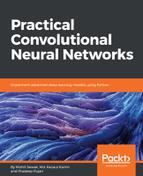Generally, a neural network needs labeled examples to learn effectively. Unsupervised learning approaches to learn from unlabeled data have not worked very well. A generative adversarial network, or simply a GAN, is part of an unsupervised learning approach but based on differentiable generator networks. GANs were first invented by Ian Goodfellow and others in 2014. Since then they have become extremely popular. This is based on game theory and has two players or networks: a generator network and b) a discriminator network, both competing against each other. This dual network game theory-based approach vastly improved the process of learning from unlabeled data. The generator network produces fake data and passes it to a discriminator. The discriminator network also sees real data and predicts whether the data it receives is fake or real. So, the generator is trained so that it can easily produce data that is very close to real data in order to fool the discriminator network. The discriminator network is trained to classify which data is real and which data is fake. So, eventually, a generator network learns to produce data that is very, very close to real data. GANs are going to be widely popular in the music and arts domains.
The following are a couple of examples of GANs:
- Pix2pix
- CycleGAN
